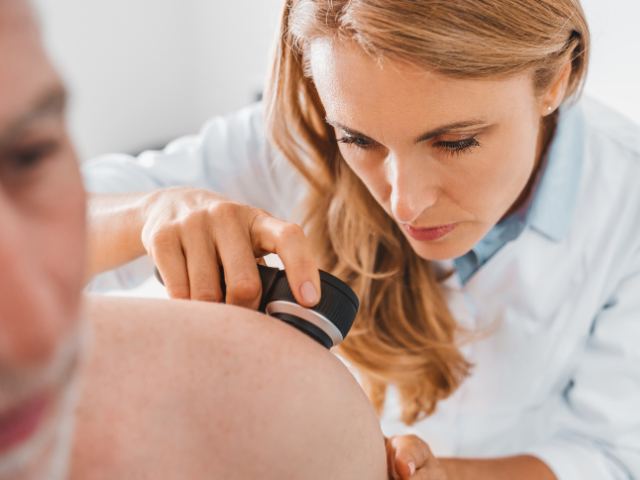Skin cancer is the most common type of cancer in the United States, but when detected early, it is highly treatable. Regular self-exams and awareness of changes in your skin can play a crucial role in spotting skin cancer early. As a dermatologist, I recommend keeping a close eye on your moles and any other skin lesions. Below, I’ll discuss some of the early warning signs of skin cancer, including the key features to watch such as the ABCDEs of melanoma.
For Pigmented Lesions (“moles”):
The ABCDEs of melanoma can help identify potential signs of skin cancer:
- Asymmetry: One half of the mole or lesion doesn’t match the other half.
- Borders: Irregular, jagged, or poorly defined borders.
- Color: Multiple colors within a mole, including shades of brown, black, red, white, or blue.
- Diameter: Moles larger than 6mm (about the size of a pencil eraser).
- Evolution: Any change in the mole’s size, shape, color, or symptoms like itching, bleeding, or crusting.
New Growths:
- The appearance of a new mole, spot, or lesion, particularly after the age of 30.
- Persistent or growing nodules, bumps, or sores that do not heal.
Bleeding or Pain:
- Unexplained tenderness or pain in a mole or skin lesion.
- Bleeding, crusting, or oozing from a mole or growth.
Non-Healing Wounds:
- Sores that don’t heal after a few weeks, especially if they bleed or crust over and reappear.
If you notice any of these signs, it’s important to schedule a dermatology appointment for further evaluation, as early detection is key in managing skin cancer.

